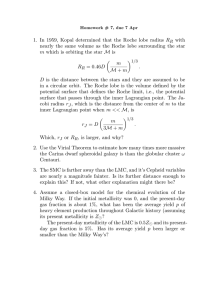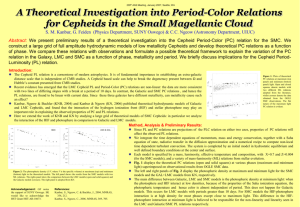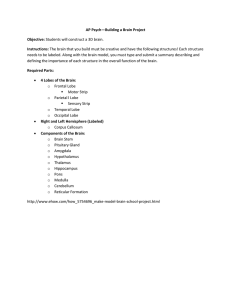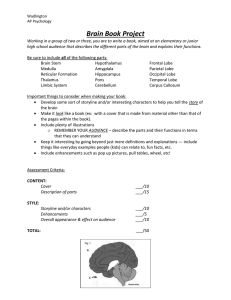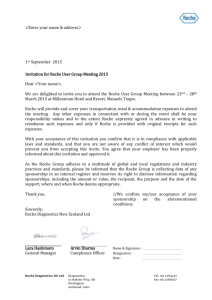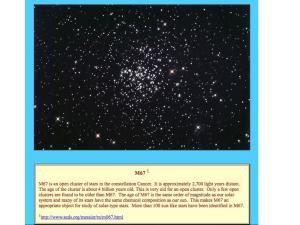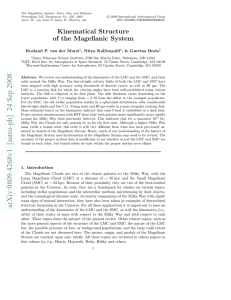1. In 1959, Kopal determined that the Roche lobe radius... with nearly the same volume as the Roche lobe surrounding the...
advertisement
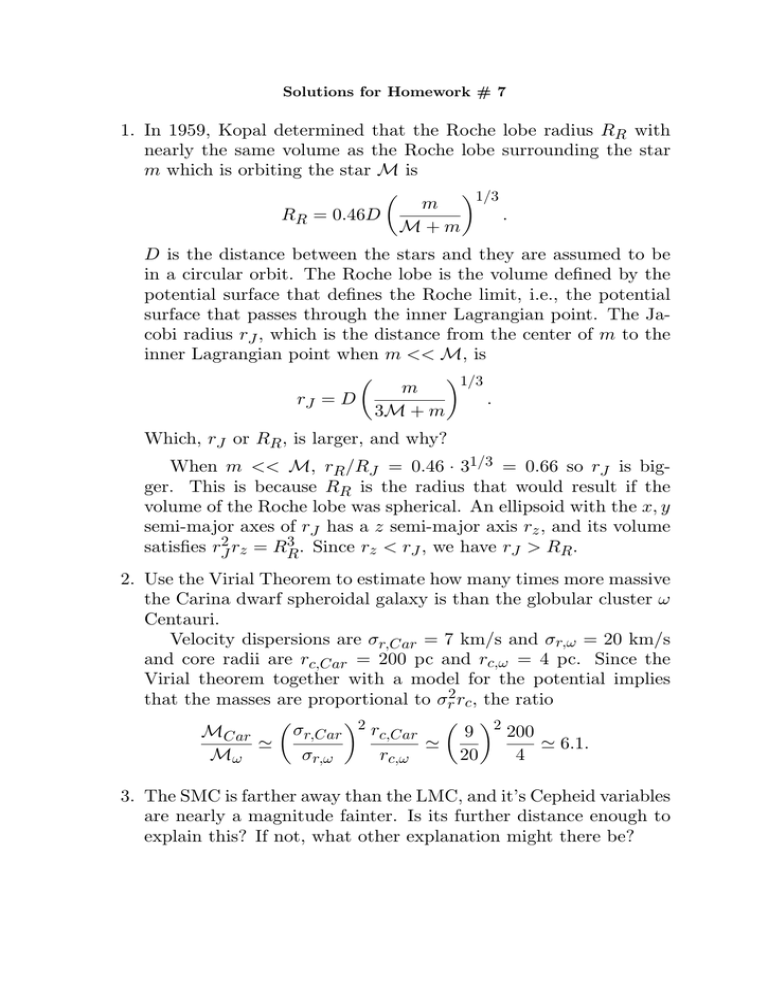
Solutions for Homework # 7 1. In 1959, Kopal determined that the Roche lobe radius RR with nearly the same volume as the Roche lobe surrounding the star m which is orbiting the star M is 1/3 m RR = 0.46D . M+m D is the distance between the stars and they are assumed to be in a circular orbit. The Roche lobe is the volume defined by the potential surface that defines the Roche limit, i.e., the potential surface that passes through the inner Lagrangian point. The Jacobi radius rJ , which is the distance from the center of m to the inner Lagrangian point when m << M, is 1/3 m . rJ = D 3M + m Which, rJ or RR , is larger, and why? When m << M, rR /RJ = 0.46 · 31/3 = 0.66 so rJ is bigger. This is because RR is the radius that would result if the volume of the Roche lobe was spherical. An ellipsoid with the x, y semi-major axes of rJ has a z semi-major axis rz , and its volume 3 . Since r < r , we have r > R . satisfies rJ2 rz = RR z J J R 2. Use the Virial Theorem to estimate how many times more massive the Carina dwarf spheroidal galaxy is than the globular cluster ω Centauri. Velocity dispersions are σr,Car = 7 km/s and σr,ω = 20 km/s and core radii are rc,Car = 200 pc and rc,ω = 4 pc. Since the Virial theorem together with a model for the potential implies that the masses are proportional to σr2 rc , the ratio 2 σr,Car 2 rc,Car MCar 9 200 ' ' ' 6.1. Mω σr,ω rc,ω 20 4 3. The SMC is farther away than the LMC, and it’s Cepheid variables are nearly a magnitude fainter. Is its further distance enough to explain this? If not, what other explanation might there be? The distance ratio is DSM C /DLM C = 63/50 = 1.26. This will account for a factor of 1.262 = 1.588 in brightness, or a magnitude difference of 2.5 log10 1.588 = 0.50. Another explanation is necessary. One likely explanation is the effect of extinction: the SMC is farther away so it’s stars will appear fainter. Another likelihood is the effect of metallicity: the SMC has a smaller metallicity. This leads to their stars having a lower luminosity for a given effective temperature, and the effect is roughly linear in metal abundance. If the SMC has half the metal abundance of the LMC, this would lead to a further magnitude difference of 2.5 log10 2 = 0.75. 4. Assume a closed-box model for the chemical evolution of the Milky Way. If the initial metallicity was 0, and the present-day gas fraction is about 1%, what has been the average yield p of heavy element production throughout Galactic history (assuming its present metallicity is Z ? In the closed box model with Z0 = 0, Z = p ln M/Mg = p ln 100 so p = Z / ln 100 = 0.22Z . The present-day metallicity of the LMC is 0.5Z and its presentday gas fraction is 5%. Has its average yield p been larger or smaller than the Milky Way’s? For the LMC, we find p = ZLM C / ln 20 = 0.17Z , so it has been smaller.
